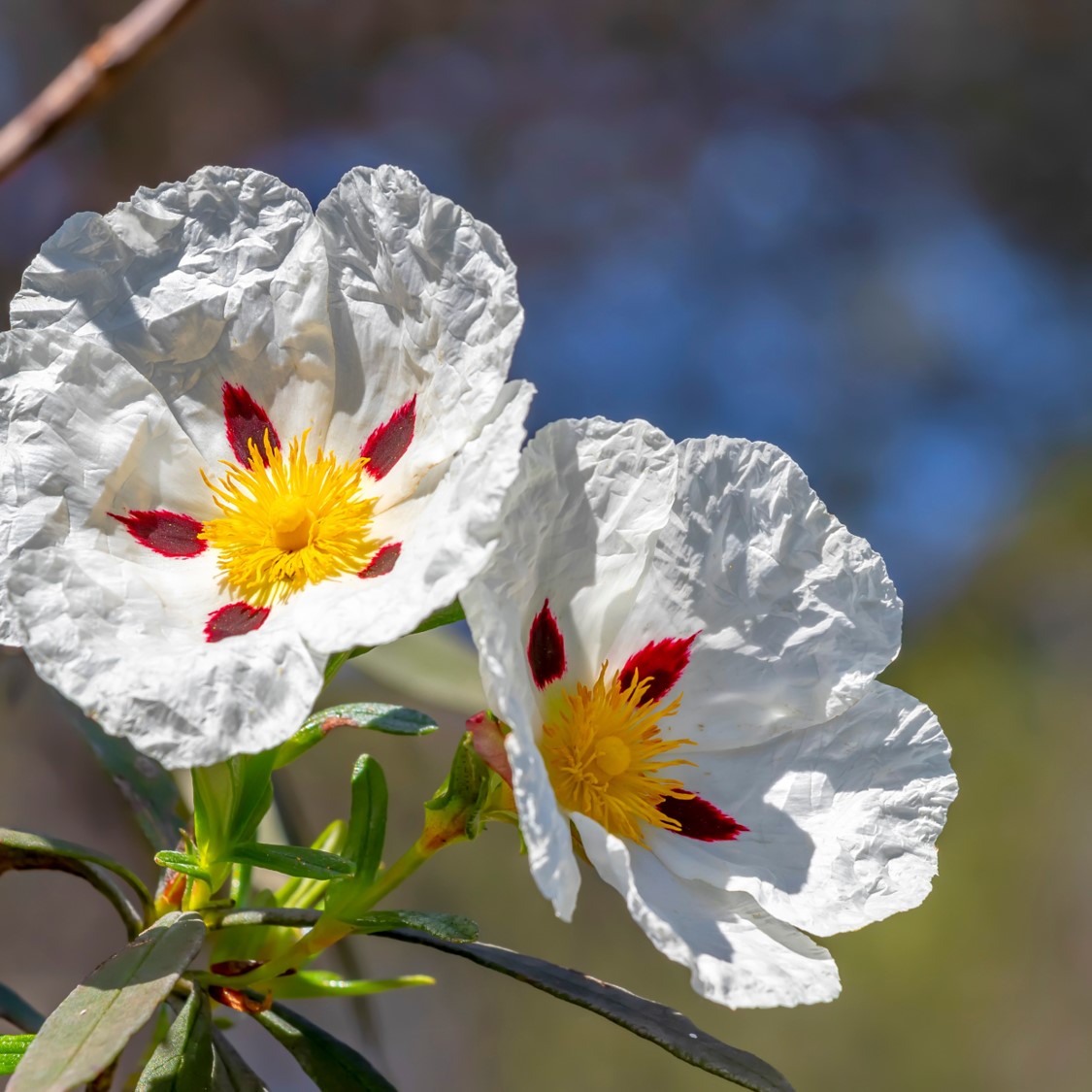Ambréine®
Naturelle
Balsamic Ambery > Ambery Cistus > Animalic > Boozy > Honeyed

Crédits photo: ScenTree SAS
Latin name :
Cistus ladaniferus L.
Botanical profile :
The cistus belongs to the Cistaceae family and to the genus Cistus. This includes three subspecies.
Geographic origin :
Cistus ladaniferus is a common plant found all over the mediterranean area. It is especially abundant in Spain ( Huelva Province - Andevalo) as well as in Portugal (Alentejo and Algarve regions). This is where the largest cistus plantations are located. It is also possible to find some cultivations in the Esterel (Var - France).
The emblematic city of Cistus is Puebla de Guzman, in Andalusia, where the communities, mainly gypsies, have transmitted a unique savoir-faire from one generation to the next.
The emblematic city of Cistus is Puebla de Guzman, in Andalusia, where the communities, mainly gypsies, have transmitted a unique savoir-faire from one generation to the next.
Chemotypes :
The genus Cistus includes about 20 different species, the majority of which exudes fragrant gum.
Among these, the most used are:
Cistus ladaniferus var. albiflorus, var. maculatos, var. stenoiphyllus, which produce the resin used in perfumes.
Cistus creticus, with rose to purple petals, surronding a tuft of stamens.
Cistus salvifolius, with white petals.
Cistus parviflorus, with pale rose petals.
Among these, the most used are:
Cistus ladaniferus var. albiflorus, var. maculatos, var. stenoiphyllus, which produce the resin used in perfumes.
Cistus creticus, with rose to purple petals, surronding a tuft of stamens.
Cistus salvifolius, with white petals.
Cistus parviflorus, with pale rose petals.
Extraction process :
In April, Cistus ladaniferus fields are covered with the famous white flowers, but they don't smell and are very delicate (they only last a few days). It is necessary to wait a few months, around May-June, for a new shoot to appear. This new branch protects itself from the sun - and from the summer heat of southern Spain - by secreting a very fragrant viscous gum. We use the latter in perfumery.
In July, from dawn to noon, new branches are cut with a sickle, bundled and taken to the factory to extract the gum. It will then be necessary to wait another 3 years to harvest the cistus again.
Ambréine® is a natural extract obtained from a fraction of the gum of the Cistus ladaniferus
In July, from dawn to noon, new branches are cut with a sickle, bundled and taken to the factory to extract the gum. It will then be necessary to wait another 3 years to harvest the cistus again.
Ambréine® is a natural extract obtained from a fraction of the gum of the Cistus ladaniferus
Major Components :
Data not available.
- Uses in perfumery :
- vibrant, elegant ingredient with its unique facets of amber, leather and resin lends base notes an olibanum-like quality with woody accents. It works very well in warm, lavish oriental accords
- Other comments :
- Data not available.
- Volatility :
- Base
- Appearance :
- Brown resin
- Stability :
- Terpenes found in this extract may polymerize under the effect of oxydation.
- Price Range :
- Donnée indisponible.
- Aromatherapy :
Informations provided below are taken from reference works in aromatherapy. They are given for information purposes only and can not constitute medical information, nor engage the responsibility of ScenTree.
CIstus possesses antiviral, antiarteritic and regulating neurovegetative virtues. It is recommended for whooping cough, multiple sclerosis, arteritis, haemorrhage and neurovegetative dystonia.

Crédits photo: ScenTree SAS
- EINECS number :
- 946-922-5
- FEMA number :
- 2610
- Allergens :
- This ingredient does not contain any allergen.
- IFRA :
- This ingredient is not restricted
To learn more about IFRA's standards : https://ifrafragrance.org/safe-use/library
ScenTree is solely responsible for the information provided here.

